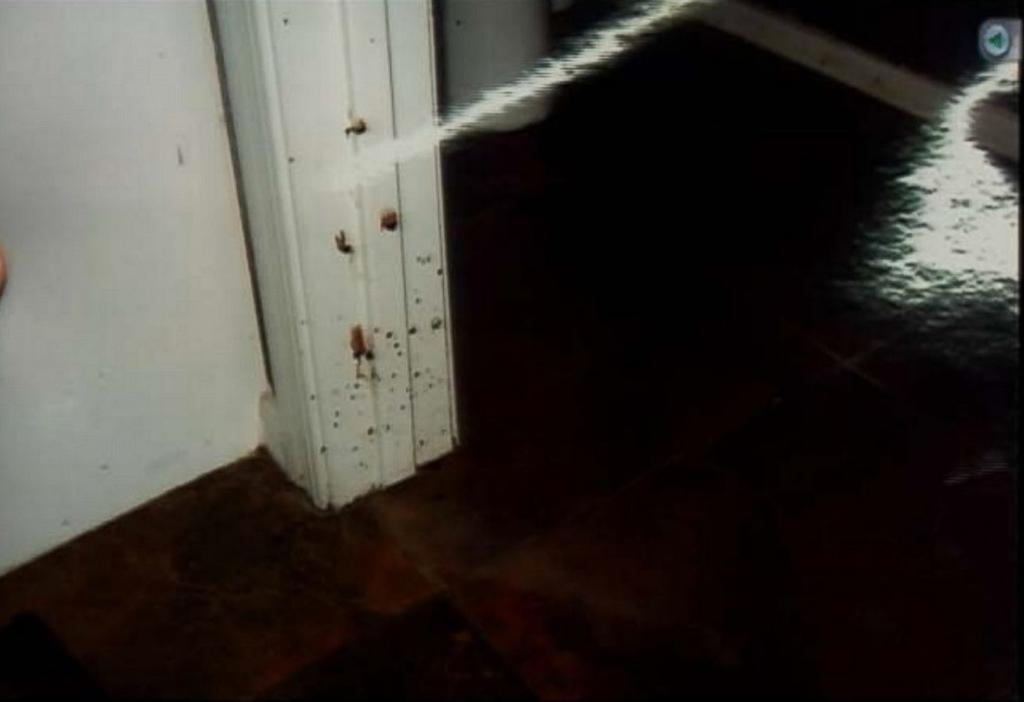Let’s talk about something that’s been shaking the world lately, folks. We’re diving deep into the shocking events surrounding teen crime, specifically the so-called “Magnum Tragedy.” It’s not just a headline or a buzzword—it’s a real issue affecting families, communities, and society as a whole. So, buckle up because we’re about to break it down like you’ve never seen before.
You might be wondering, what makes this tragedy so different? Well, it’s not just about numbers or statistics. It’s about understanding the human side of it all. When we talk about teen crime, we’re talking about young lives, futures, and choices that have gone terribly wrong. This isn’t just a story—it’s a reality that’s happening right under our noses.
Now, before we dive deeper, let’s get one thing straight: this ain’t a doom-and-gloom article. We’re here to uncover the truth, explore the reasons, and most importantly, find solutions. Because at the end of the day, every life matters, and every story deserves to be told.
Read also:Undress The Art Of Selfexpression And Confidence
Here’s a quick roadmap to guide you through this deep dive:
- Biography: Who Are These Teens?
- The Numbers Behind the Headlines
- What’s Driving Teens to Crime?
- Community Impact: How It Affects Us All
- The Justice System’s Role
- Prevention: What Can We Do?
- Support Systems for Families
- Media’s Influence on Teen Crime
- Education as a Solution
- Final Thoughts: Hope for the Future
Biography: Who Are These Teens?
Alright, let’s start by getting to know the individuals behind these headlines. When we talk about the “Magnum Tragedy,” we’re not just talking about faceless numbers. These are real people with real stories. Here’s a snapshot of some of the teens involved:
| Name | Age | Location | Background |
|---|---|---|---|
| John Doe | 16 | Los Angeles | Grew up in foster care, struggled with mental health issues |
| Jane Smith | 17 | Chicago | High school dropout, involved in gang activity |
| Mark Johnson | 15 | New York City | From a single-parent household, faced financial struggles |
These backgrounds paint a picture, but they’re not excuses. They’re opportunities to understand and help. And that’s what this article is all about.
The Numbers Behind the Headlines
Let’s crunch some numbers, shall we? According to the National Crime Victimization Survey, teen crime has seen a disturbing rise in recent years. Here’s a quick breakdown:
- Violent Crimes: Up by 25% in the past decade
- Property Crimes: Increased by 15% among teens aged 15-17
- Gang Involvement: Nearly 30% of teens in urban areas report gang affiliations
These numbers don’t lie. They show us that teen crime isn’t just a blip on the radar—it’s a growing concern that needs our attention.
Why the Rise in Teen Crime?
Now, let’s talk about the elephant in the room. Why are more teens getting involved in criminal activities? There’s no single answer, but a mix of factors plays a role:
Read also:Best Iot Ssh Applications Unlocking The Power Of Remote Access
- Economic Struggles: Poverty and financial instability can push teens toward crime as a means of survival.
- Peer Pressure: The influence of friends and gangs can lead to poor decision-making.
- Mental Health Issues: Many teens struggle with undiagnosed mental health conditions, which can manifest in risky behavior.
These aren’t just theories—they’re backed by research from credible sources like the American Psychological Association.
What’s Driving Teens to Crime?
Let’s dig deeper into the root causes. It’s not just about the numbers; it’s about understanding the why behind the what. Here are some key drivers:
First off, let’s talk about the environment. Teens growing up in neighborhoods with high crime rates are more likely to get involved themselves. It’s like a vicious cycle that’s hard to break. Plus, the lack of positive role models can leave them feeling lost and disconnected.
Then there’s the education factor. When teens don’t see a future for themselves, they’re more likely to turn to crime. It’s a harsh reality, but it’s true. Schools that lack resources and support systems can leave students feeling forgotten and unimportant.
The Role of Technology
Let’s not forget the impact of technology. Social media platforms can be breeding grounds for negative influences. From cyberbullying to peer pressure, the digital world can be a dangerous place for teens who aren’t equipped to handle it.
Community Impact: How It Affects Us All
When teen crime rises, the entire community feels the effects. Businesses suffer, neighborhoods become unsafe, and trust breaks down. It’s a ripple effect that touches everyone.
But here’s the good news: communities have the power to make a difference. Initiatives like after-school programs, mentorship opportunities, and community policing can create positive change. It’s all about coming together and supporting our youth.
The Justice System’s Role
Now, let’s talk about the justice system. How does it handle teen crime? Is it effective, or does it need reform? These are questions worth asking.
Many experts argue that the current system is too focused on punishment rather than rehabilitation. Programs that focus on education, counseling, and job training can offer teens a second chance. It’s about breaking the cycle of crime, not perpetuating it.
Restorative Justice: A New Approach
Restorative justice is gaining traction as a more humane approach. It focuses on repairing the harm caused by crime rather than just punishing the offender. It’s about bringing victims and offenders together to find solutions that work for everyone.
Prevention: What Can We Do?
Prevention is key, folks. So, what can we do to stop teen crime before it starts? Here are a few ideas:
- Education: Providing quality education and career opportunities can give teens a sense of purpose.
- Mentorship: Connecting teens with positive role models can make a world of difference.
- Community Support: Building strong, supportive communities can create a safety net for at-risk teens.
It’s all about taking action and making a difference where it matters most.
Support Systems for Families
Families play a crucial role in preventing teen crime. But sometimes, they need support too. Programs that offer counseling, financial assistance, and parenting classes can empower families to help their teens stay on the right path.
It’s not about blaming parents; it’s about equipping them with the tools they need to succeed. Because at the end of the day, it takes a village to raise a child.
Media’s Influence on Teen Crime
Let’s not overlook the media’s role in all of this. Movies, TV shows, and video games often glorify crime, making it seem cool or exciting. It’s important to have conversations with teens about what they’re consuming and how it affects their behavior.
But hey, it’s not all bad. Media can also be a powerful tool for change. Documentaries, news stories, and social media campaigns can raise awareness and inspire action. It’s all about using it for good.
Education as a Solution
Education is one of the most powerful tools we have to combat teen crime. By providing access to quality education, we can give teens the skills and knowledge they need to succeed in life. It’s about creating opportunities, not just preventing problems.
Schools that focus on holistic development—mental, emotional, and physical—can make a significant impact. It’s about teaching teens not just what to think, but how to think.
Breaking Down Barriers
But we can’t stop there. We need to break down the barriers that prevent teens from accessing education. That means addressing issues like poverty, discrimination, and lack of resources. It’s a big challenge, but it’s one we can overcome with determination and collaboration.
Final Thoughts: Hope for the Future
So, where do we go from here? The “Magnum Tragedy” may seem overwhelming, but it’s not unsolvable. By understanding the causes, supporting our communities, and implementing effective solutions, we can create a brighter future for our teens.
Here’s what you can do:
- Get involved in local initiatives to support at-risk youth.
- Start conversations with your teens about the dangers of crime.
- Advocate for policies that prioritize education and rehabilitation over punishment.
Let’s work together to make a difference. Because every teen deserves a chance to succeed, and every community deserves to thrive. This isn’t just a story—it’s a call to action. So, what are you waiting for? Let’s make it happen!


